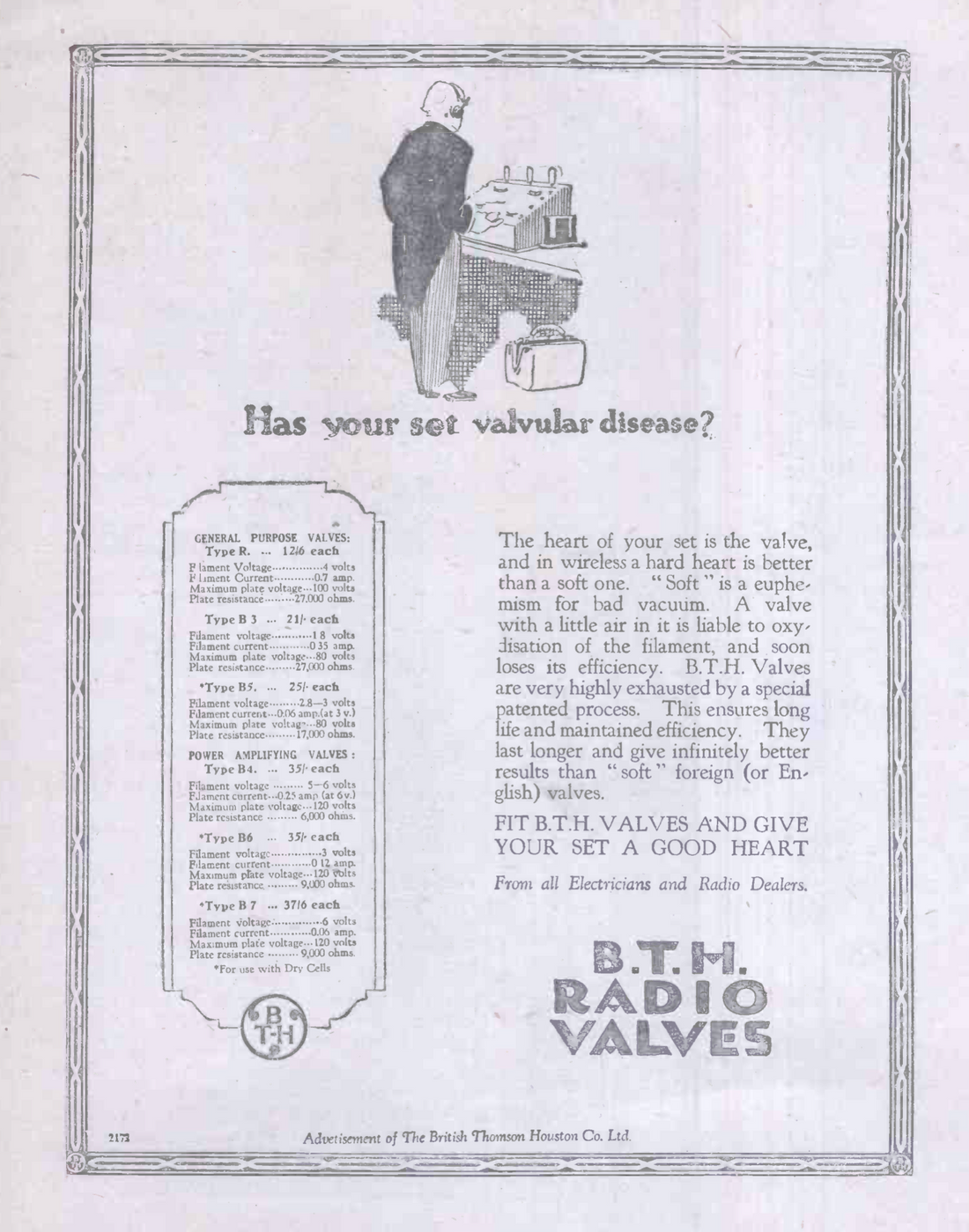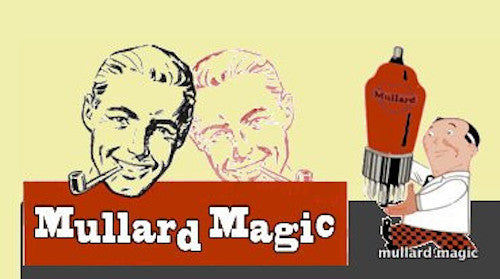
AEI (BTH)
Share

Associated Electrical Industries
1926 Gerard Swope, president of General Electric (U.S.A), proposed that BTH, Westinghouse, GEC and the English Electric Co should amalgamate but Hugo Hirst of GEC was not interested in Swope’s scheme.
1928 Associated Electrical Industries (AEI) was established, with Howard C. Levis (chairman of BTH) as chairman, as a result of the merger of Metropolitan-Vickers and its rival British Thomson-Houston (BTH), a company of similar size and product lineup. Combined, they would be one of the few companies able to compete with Marconi's Wireless Telegraph Co or the English Electric Co on an equal footing. Also included in the new group were Edison Swan Electric Co (Ediswan) and Ferguson Pailin of Openshaw, Manchester (which BTH had been in the process of buying in 1928). Several of the directors of Metropolitan-Vickers resigned to become directors of the subsidary Metropolitan-Vickers Electrical Co Ltd. The group had almost 30,000 employees.
In fact the new group was handicapped by poor communication and intense rivalry between Metrovick and BTH, which typically worked at cross purposes to each other. AEI was never able to exert effective control over its two competing subsidiaries. Ediswan took on valve production whilst Metrovick ceased valve production; BTH took on radio set production and continued with special purpose valves for non-domestic purposes
1929 The annual meeting was told that agreement had been reached with the International General Electric Co (USA) which meant that the whole group would be able to exchange patents and manufacturing information with GE (USA). Also, International General Electric Co. had significant financial interest in AEI, which it held as an investment with no suggestion that it wanted control.
c.1932 AEI ceased manufacture of radio receivers.
1937 Frank Whittle's Power Jets company built the world's first prototype jet engine at the BTH works in Rugby. BTH had a major role in developing it. Development was later moved to the Lutterworth works, which were falling into disuse at the time. BTH's directors seemed sceptical of the design and offered little help.
1938 Associated Electrical Industries (AEI) Ltd shares in Westland Aircraft Ltd, alongside John Brown and Co which bought a controlling interest in Westland .
WW2 BTH expanded north of the River Avon into the Boughton Road site to make magnetos for aircraft engines and other war products.
1940 BTH decided they were not really interested in making jet engines due to their commitment to electrical equipment. Rover was soon selected to make jet engines.
1944 The Lutterworth Power Jets work was nationalized.
1945 After World War II Oliver Lyttelton took over AEI, and started a massive expansion.
1947 The Hungarian scientist Dennis Gabor invented holography at the BTH site in Rugby.
1952 AEI's subsidiary Edison Swan Co purchased British Mechanical Productions and its subsidiary General Accessories Co, which made electrical accessories under the Clix brand and radio and television components, thereby filling a gap in AEI's range of products.
1952 The AEI Group consisted of:
- BTH
- Metropolitan-Vickers Electrical Co
- Edison Swan Electric Co
- Ferguson Pailin
- Hotpoint Electric Appliance Co
- International Refrigerator Co
- Newton Victor
- Sunvic Controls
- Premier Electric Heaters
1954 Take-over of Siemens Bros , thereby acquiring a 50% interest in Submarine Cables Ltd.
1954-1963 Lord Chandos was chairman of AEI.
1955 Four industrial groups formed to exploit the information being made available by UKAEA on design of nuclear power "furnaces" - Industrial Atomic Energy Group involving AEI and John Thompson with electrical generating expertise from Metropolitan-Vickers and BTH. Other groups were English Electric Co and Babcock and Wilcox; C. A. Parsons and Co and Head, Wrightson and Co; GEC and Simon-CarvesLtd
1956 AEI-John Thompson Nuclear Energy Company received an order for one of 3 nuclear power stations ordered by the Central Electricity Authority.
1957 The massive new £8 million turbine works was opened at Larne as a result.
1957 or after: BTH won the contract to build the new Buenos Aires power station, valued at £35 million. Rivalries intensified with Metrovick. Lyttelton continued to try to reduce this friction, leading to several unsuccessful reorganizations and slipping profits.
1960 Jan 1st. To try to cure its internal rivalry, AEI stopped using the names BTH and Metrovick. This led to a huge falling-off in sales because no-one had heard of "AEI" before, and in turn, a massive drop in AEI's stock price. Continued attempts to streamline what was two separate management structures continued to fail, and by the mid-60's the entire AEI empire was in financial trouble.
1960. The AEI research lab was built (building BR57 in the Boughton Road site).
1960 A consortium of AEI, Automatic Telephone and Electric Co, Ericsson TelephonesLtd, GEC, Marconi's Wireless Telegraph Co, Plessey Co and STC formed a holding company Combined Telephone Holdings only days after its members had failed in their bid to acquire Telephone Manufacturing Co. Combined Telephone Holdings purchased for cash more than half of the shares in Phoenix Telephone and Electric Works and offered to purchase the rest.
1960 Heavy electrical plant advertised under the AEI brand. Heavy plant division at Rugby and Manchester.
1960 Nuclear Power Group was formed as partnership between Nuclear Power Plant Co Limited and the AEI-John Thompson Nuclear Energy Company Limited.
1961 The name AEI was first used on products.
1961 Britain's largest electrical manufacturer covering a wide range of manufacture, design and distribution within the following divisions: Turbine-Generator, Transformer, Traction, Switchgear, Instrumentation, Electronic Apparatus, Heavy Electrical Plant, Motor and Control Gear, Cables, Construction (Cables and Lines) Radio and Electronic Components, Telecommunications. 103,450 employees. Works in more than 50 UK towns.
1964 Formed joint venture with Thorn Electrical Industries to combine their manufacturing and sales activities in lighting products[11].
1966 AEI purchased the remaining 50% of Submarine Cables from BICC.
1967 Supplied the turbine generators for Eggborough power station
1967 AEI acquired Hackbridge Holdings Ltd which was involved in transformers.
1967 Lancashire Dynamo and Crypto Ltd was acquired by AEI.
1967 GEC bought AEI outright.
1968 Supplied turbo-alternator for the Winfrith power station
1970 AEI sold Submarine Cables Ltd to Standard Telephones and Cables Ltd.
- 1922 Became private company
- 1947 Became public company
- 1951 Name changed
- 1961 Specialists in capacitor design and manufacture for all radio, electronic and electrical power uses. Industrial applications include power factor improvement, phase splitting, fluorescent and discharge lighting, motor starting and running,.
-
R. F. heating, radio transmission, telephone installations, ignition and interference suppression.

